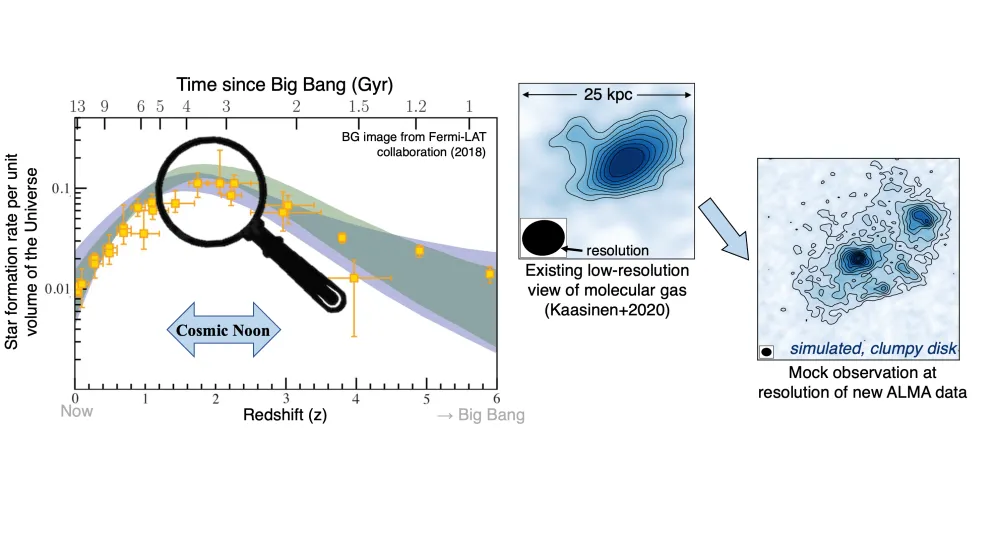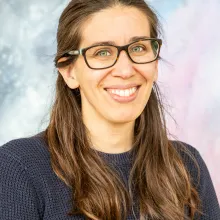
What drives the evolution of galaxy disks?
The goal of this project is to use new, high-resolution simulations to understand how key physical processes, like stellar feedback and gravitational instabilities, shape disk galaxies (from 11 Gyr ago to today).
Research themes
Project status
Content navigation
About
Around half the stars in today’s Universe were formed 8-11 Gyr ago (at z=1–3), an epoch now dubbed Cosmic Noon. Most of this star formation took place within disk galaxies, which are ubiquitous at (and since) Cosmic Noon. Yet, there are still key gaps in our understanding of how these disks form and how the star formation within them is regulated – gaps that relate to the role played by stellar feedback and gravitational instabilities. Constraining the relative impact of these physical processes has so far been challenging due to our incomplete view of z>1galaxy disks; previous observations and simulations did not resolve the fuel for star formation – cold, molecular gas – in typical galaxy samples. But these challenges are now being addressed through new high-resolution observations, taken with the Atacama Large sub-Millimeter Array (ALMA), and the next generation of cosmological simulations (especially COLIBRE).
In this project, you will use these new simulations to test how key physical processes like feedback and disk instabilities regulate both star formation and disk evolution. You will create predictions for two major international survey teams (CONDOR and PASSAGES), resolving z=1–3 galaxies with the world’s largest telescopes (including ALMA, JWST, and the VLT).
Your first project will be to use the new cosmological simulation, COLIBRE, to test how the turbulence and thickness of disk galaxies evolve – i.e. you will measure key properties like the velocity dispersion and scale height of different gas phases, and compare their evolution to existing theoretical models and observations.
Your next challenge would be to create “synthetic” (resolved 3D) data products from these simulations, directly matching these to the high-resolution ALMA, JWST and VLT data. In this way, you will test to what extent our best physical models of galaxy evolution match reality, refining these models as needed.
Through these projects, you will have the chance to collaborate with experts based in the UK, Netherlands, and USA – whom you would be able to visit for extended periods during the PhD.

Image: Resolving Molecular Gas at Cosmic Noon.

